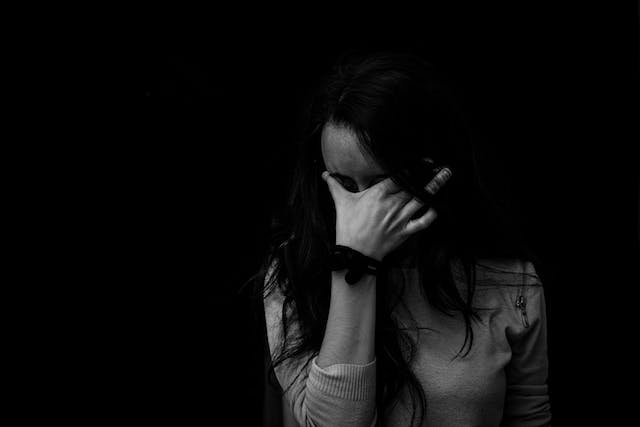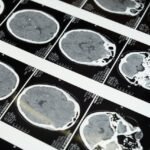
Delving into Obsessive-Compulsive Disorder (OCD), a prevalent mental health condition impacting millions globally.
This disorder manifests through intrusive thoughts (obsessions) inducing anxiety, paired with repetitive behaviors or mental acts (compulsions) aimed at alleviating that anxiety.
This blog post offers an insightful exploration of what OCD entails, highlighting its signs, symptoms, stages, associated risk factors, and contemporary treatment approaches.
What is OCD?
Obsessive-Compulsive Disorder (OCD), a mental health condition cutting across age, gender, and backgrounds, stands as a distinct form of anxiety disorder.
It revolves around intrusive thoughts, images, or impulses termed obsessions, triggering anxiety.
To alleviate this distress, individuals with OCD engage in repetitive behaviors or mental acts known as compulsions.
This condition, often debilitating, has the potential to disrupt daily life, causing significant distress.
What are the Signs and Symptoms of OCD?
The signs and symptoms of OCD can vary from person to person, but some common ones include:
- Obsessive thoughts or images that are intrusive and unwanted
- Repetitive behaviors or mental acts that are performed to reduce anxiety
- Fear of contamination or germs
- Need for symmetry or order
- Fear of harm or danger to oneself or others
- Excessive checking or reassurance seeking
- Hoarding or collecting items
- Avoidance of certain situations or objects

What are the Stages of OCD?
Obsessive-Compulsive Disorder (OCD) unfolds in a sequence of distinct stages, each contributing to the intricate tapestry of this mental health condition.
Let’s delve into the nuances of each stage, shedding light on the journey individuals undergo when grappling with OCD.
Obsession
In this initial phase, individuals experience intrusive thoughts or images, known as obsessions.
These thoughts are often distressing, causing heightened anxiety.
Obsessions can vary widely, from fears of contamination to concerns about harm befalling oneself or others.
The hallmark of this stage lies in the emergence of thoughts that disrupt the individual’s mental equilibrium.
Compulsion
As the anxiety triggered by obsessions intensifies, individuals transition to the compulsion stage.
Here, they engage in repetitive behaviors or mental acts as a response to the distress induced by obsessions.
Compulsions are the individual’s attempt to regain a sense of control or alleviate the heightened anxiety.
These behaviors can manifest as overt actions, such as washing or checking, or as covert mental rituals, such as counting or repeating specific words.
Relief
The culmination of the OCD cycle occurs in the relief stage, where the repetitive behaviors or mental acts temporarily reduce the anxiety.
This relief, however, is transient and does not address the root cause of the obsessions.
The cycle is destined to restart as the obsessions resurface, perpetuating the cycle of anxiety, compulsion, and momentary relief.
What are the Risk Factors for OCD?

The exact cause of OCD is unknown, but there are several risk factors that may increase the likelihood of developing the condition, including:
Genetics
A significant factor influencing the susceptibility to OCD is genetics.
The familial clustering of OCD cases suggests a hereditary link.
Individuals with a family history of OCD are at an increased risk, highlighting the role of genetic predisposition in shaping the vulnerability to this disorder.
Brain chemistry
Within the intricate realm of brain chemistry, imbalances in neurotransmitters play a pivotal role in the development of OCD.
Specifically, alterations in serotonin levels are implicated.
The nuanced interplay of neurotransmitters contributes to the manifestation of obsessive thoughts and the compulsive behaviors that follow.
Environmental factors
External elements, including trauma, abuse, or stressful life events, can act as catalysts for the onset of OCD.
Traumatic experiences or significant life stressors may serve as triggers, precipitating the emergence of obsessive thoughts and compulsive behaviors as coping mechanisms.
How is OCD Treated?
Addressing Obsessive-Compulsive Disorder (OCD) involves a comprehensive strategy encompassing medication and psychotherapy.
Let’s explore the intricacies of these treatment modalities, shedding light on their roles in fostering recovery.
Medication
Regulating neurotransmitters
Central to OCD treatment, SSRIs emerge as a cornerstone.
These medications work by regulating serotonin levels in the brain, addressing the neurotransmitter imbalances associated with OCD.
By enhancing serotonin availability, SSRIs contribute to mood stabilization and a reduction in obsessive thoughts and compulsive behaviors.
Commonly Prescribed SSRIs
Medications like fluoxetine, fluvoxamine, and sertraline are frequently prescribed.
Tailoring the choice of SSRIs to individual needs is a crucial aspect of medication management.
Psychotherapy: Cognitive-Behavioral Therapy (CBT)
Empowering behavioral change
CBT stands as a pivotal psychotherapeutic approach for treating OCD.
It equips individuals with practical skills to manage obsessions and compulsions.
Through cognitive restructuring, individuals learn to challenge and modify maladaptive thought patterns, fostering healthier responses to triggers.
Exposure and response prevention (ERP)
An integral component of CBT for OCD is Exposure and Response Prevention.
This involves controlled exposure to obsessive triggers, paired with refraining from engaging in compulsive behaviors.
Over time, this process helps desensitize individuals to anxiety-provoking stimuli.

What Are Some Common Misconceptions About OCD?
Some common misconceptions about OCD include:
Everyone with OCD is super neat and organized
While some individuals with OCD may have symptoms related to cleanliness and organization, not everyone with OCD experiences these specific symptoms.
OCD can manifest in a variety of ways, and not all individuals with the disorder have the same compulsions.
OCD is all about cleanliness
While cleanliness and fear of contamination are common themes in OCD, the disorder encompasses a much broader range of obsessions and compulsions.
These can include intrusive thoughts, fears of harm, and the need for symmetry or order.
People with OCD are automatically neat and clean
This is a common misconception. While some individuals with OCD may exhibit these traits, many others do not.
OCD is a complex and debilitating disorder that affects individuals in different ways.
OCD is obvious
In reality, it can often be difficult to tell when a person has OCD.
Many people with OCD hide their compulsions in public due to fear of being exposed.
They often will not talk about their obsessive thoughts and only engage in compulsive behaviors in private.
Everyone has a little OCD
This is a harmful misconception.
While it’s common for people to use the term “OCD” casually to describe a preference for order or cleanliness, it’s important to recognize that OCD is a serious mental health condition that often requires treatment.
People with OCD just need to be more relaxed
Individuals with OCD find it difficult to dismiss their anxiety and unpleasant thoughts.
Over time and without treatment, the thoughts can become more distressing and take over.
OCD is about a distaste for clutter
OCD is not necessarily about a distaste for clutter.
It’s a complex disorder that involves intrusive thoughts and repetitive behaviors that can significantly impact an individual’s daily life.
Conclusion
Obsessive-Compulsive Disorder (OCD) is a mental health condition that, if left unaddressed, can significantly disrupt daily life.
This comprehensive guide delves into the intricate facets of OCD, from its signs and symptoms to the stages it progresses through, the contributing risk factors, and the available avenues for treatment.
By gaining insight into these aspects, individuals and their support networks can navigate the challenges posed by OCD, fostering a path towards enhanced well-being and an improved quality of life.
FAQs
OCD is a mental health condition that is characterized by intrusive thoughts, images, or impulses (obsessions) that cause anxiety and repetitive behaviors or mental acts (compulsions) that are performed to reduce the anxiety.
The signs and symptoms of OCD can include obsessive thoughts or images, repetitive behaviors or mental acts, fear of contamination or germs, need for symmetry or order, fear of harm or danger, excessive checking or reassurance seeking, hoarding or collecting items, and avoidance of certain situations or objects.
OCD is typically treated with a combination of medication and psychotherapy, such as SSRIs and CBT.



